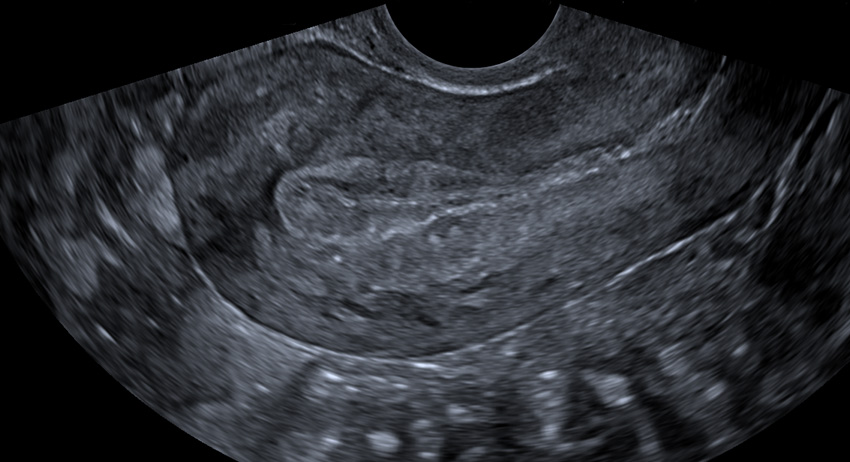Pelvic Ultrasound
A pelvic ultrasound uses high-frequency sound waves to capture images of structures in the pelvic region, such as the bladder. For men, the scan focuses on the prostate gland and seminal vesicles, while for women, this scan focuses on the ovaries, uterus, cervix, and fallopian tubes. Typically, the goal of a pelvic ultrasound is to assess your reproductive and urinary systems.
Reasons for a Pelvic Ultrasound
Your doctor may order a pelvic ultrasound to investigate pain in your reproductive organs or pelvic region.
Additionally, this test can help investigate:
- Urinary problems
- Discomfort with appendix
- Bleeding (vaginal or not)
- Menstrual problems, such as irregular periods or lack of periods
- Growths, masses, or excess fluid
- Changes in bladder shape
- Placement of intrauterine device (IUD)
Combined Abdominal and Pelvic Ultrasound
Your doctor may request a combined abdominal and pelvic exam. Abdo-pelvic ultrasounds can provide a total assessment of specific systems, such as the urinary or endocrine system. Since some organs are in both regions, it is logical to order imaging of both the abdomen and pelvis.
Please note that exam preparation for a combined abdominal and pelvic ultrasound is different from the preparation for a pelvic-only ultrasound. You must drink water before a routine pelvic ultrasound. For a combined abdo-pelvic exam, you must fast and have a full bladder.
Visit our exam prep page for more information about combined abdominal and pelvic ultrasound exam preparation.
What Happens During My Pelvic Ultrasound?
- You may be asked to change into a gown.
- The sonographer will ask you to expose your pelvis for imaging. Rearranging your clothes for imaging may involve undoing your pants or lowering your underwear slightly.
- The sonographer will apply a warm, hypoallergenic ultrasound gel to your pelvis and move the transducer (probe) around your pelvic region to gather images of your organs and bladder.
- The sonographer will apply moderate pressure with the probe, which may be momentarily uncomfortable but should not cause pain.
- Please inform your sonographer of any discomfort.
- You may be asked to change position – lying on your side or sitting – or foam blocks may be used to elevate individual limbs. This is done to move your organs into a better place for imaging.
- Women will be asked for consent to perform a transvaginal ultrasound evaluation.
- After the sonographer has captured the images, you are free to leave.
- A radiologist will review the images and send a detailed report to your doctor, usually within one business day.
Transvaginal Ultrasound for Women
Usually, a transvaginal ultrasound, also known as endovaginal or internal ultrasound, is performed to provide additional images for the radiologist. This exam requires a unique ultrasound wand that can provide higher-quality images of the female reproductive system.
While traditional transabdominal ultrasound imaging uses a probe on your belly, a transvaginal ultrasound requires the ultrasound wand to be gently inserted into the vagina. Your doctor will usually request an internal ultrasound to take a closer look at your reproductive organs, such as the uterus, ovaries, fallopian tubes, or cervix.
What Happens During My Transvaginal Ultrasound?
- After the external pelvic scan is complete, your sonographer will explain the internal procedure and ask for consent.
- If you consent, you will be asked to empty your bladder.
- A female chaperone or sonographer will instruct you how to begin the process. They will explain how to use a sponge to elevate your bottom and help position you on the bed with a sheet for privacy.
- The sonographer will hand you the wand, and you will insert it into your vagina.
- Once the wand is inserted, the sonographer will control the wand, collecting images for your doctor.
- After your sonographer captures enough images, they will remove the wand, and you are free to leave.
- A radiologist will review the images and send a detailed report to your doctor, usually within one business day.
Transvaginal Ultrasound Exam Preparation
Your sonographer will perform the internal transvaginal ultrasound immediately after your external pelvic scan, during the same appointment.
The transvaginal ultrasound requires no preparation. Although you require a full bladder for your external pelvic scan, the sonographer will ask you to empty your bladder for the internal scan.
Preparing for your pelvic ultrasound will ensure you are prepared for your transvaginal ultrasound. Visit our exam prep page for more details about pelvic ultrasound exam preparation.
The Right to Refuse an Internal Ultrasound
All patients have the right to refuse an internal ultrasound. Unless the patient has never had sexual intercourse, we highly recommend the additional imaging, as it provides our radiologist and the doctor with as much information as possible for an accurate diagnosis.
Making Your Transgavinal Ultrasound More Comfortable
To make your transvaginal ultrasound more comfortable, you can request a female sonographer at the time of booking.
It is important to understand that because of the volume of exams and staffing limitations, we cannot always accommodate this request.
However, if a male sonographer must perform your transvaginal ultrasound, we always ensure a female colleague is in the room with you for the duration of the scan.
Orientation
During a pelvic ultrasound, you will be on a bed, on your back. You may be asked to change position during your scan. Changing position helps to move your organs into a better place so that the sonographer can capture high-quality images.
Cost
If you have an Alberta Health Care card or valid health care card from out of province, there is no cost for a pelvic ultrasound (except in Quebec).
Duration
A pelvic ultrasound scan lasts approximately 30 minutes. If a transvaginal ultrasound is required, the overall exam duration may be slightly longer.
Exam Preparation
Being prepared for your pelvic ultrasound helps us take the best possible images for diagnosis. Please visit our exam prep page for more instructions specific to pelvic ultrasound.



